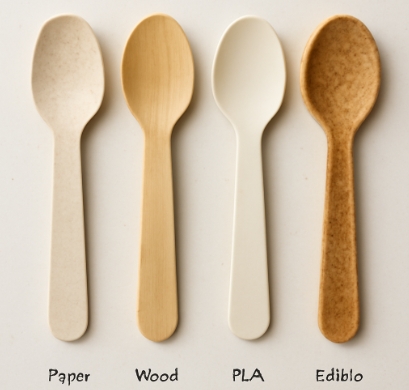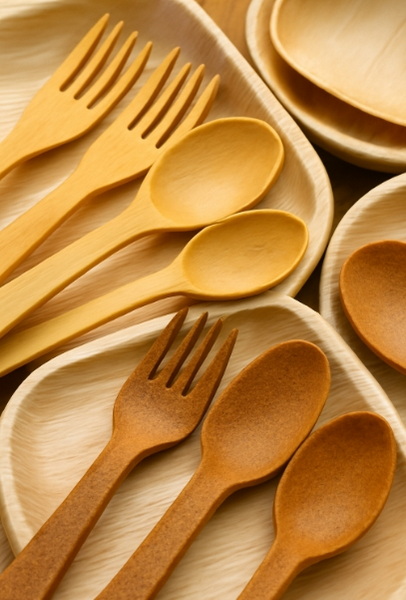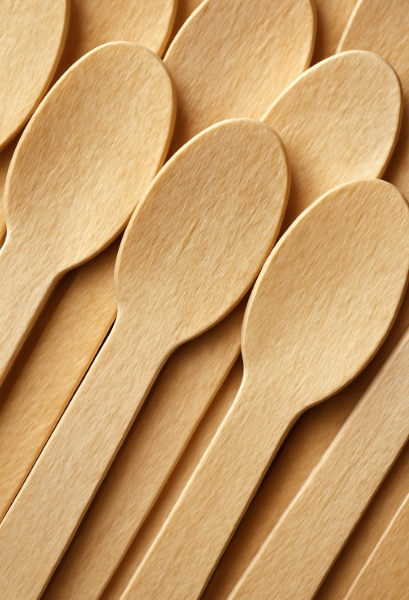
Content Menu
● The Problem with Traditional Disposable Ice Cream Spoons
● What Makes an Ice Cream Spoon Disposable and Eco-Friendly?
● Types of Eco-Friendly Disposable Ice Cream Spoons
>> Paper Ice Cream Spoons
>> Wooden Ice Cream Spoons
>> Compostable Bioplastic Spoons (PLA)
>> Edible Ice Cream Spoons
>> Reusable Options
● How Are Eco-Friendly Disposable Ice Cream Spoons Made?
>> Paper Spoons
>> Wooden Spoons
>> PLA Spoons
>> Edible Spoons
● Benefits of Eco-Friendly Ice Cream Spoon Disposable Alternatives
● Challenges and Considerations
● How to Choose the Best Eco-Friendly Ice Cream Spoon Disposable Option
● The Future of Eco-Friendly Disposable Ice Cream Spoons
● Conclusion
● FAQs
>> 1. What materials are used for eco-friendly ice cream spoon disposable options?
>> 2. Are paper and wooden ice cream spoons strong enough for hard ice cream?
>> 3. Can compostable bioplastic spoons (PLA) be composted at home?
>> 4. Do edible ice cream spoons affect the taste of my dessert?
>> 5. Where can I buy eco-friendly disposable ice cream spoons in bulk?
The world's love for ice cream is undeniable, but the environmental impact of single-use plastic cutlery—especially the ubiquitous ice cream spoon disposable—has become a pressing concern. As sustainability takes center stage in consumer choices, businesses and individuals alike are searching for eco-friendly alternatives that don't compromise on convenience or enjoyment. This article explores the latest innovations in eco-friendly disposable ice cream spoons, examining materials, benefits, and the future of sustainable dessert enjoyment.

The Problem with Traditional Disposable Ice Cream Spoons
Disposable ice cream spoons, typically made from petroleum-based plastics like polystyrene or polypropylene, are favored for their low cost and convenience. However, their environmental drawbacks are significant:
- Non-biodegradable: Plastic spoons can persist in landfills for centuries, breaking down into harmful microplastics that contaminate soil and water.
- Resource-intensive: Production relies on non-renewable fossil fuels, contributing to greenhouse gas emissions and resource depletion.
- Waste generation: Used for mere minutes, these spoons add to the mounting problem of single-use plastic waste.
The need for alternatives that maintain convenience while reducing environmental harm is clear.
What Makes an Ice Cream Spoon Disposable and Eco-Friendly?
An eco-friendly disposable ice cream spoon is designed to minimize environmental impact throughout its life cycle. Key features include:
- Biodegradability or compostability: The spoon should break down naturally, ideally in a home or commercial composting environment.
- Sustainable sourcing: Materials should come from renewable or recycled sources.
- Minimal chemical treatment: Avoidance of toxic coatings or additives.
- Low carbon footprint: Efficient manufacturing and transportation processes.
Types of Eco-Friendly Disposable Ice Cream Spoons
Let's explore the most popular and innovative options available today.
Paper Ice Cream Spoons
Paper-based ice cream spoon disposable options have surged in popularity as a plastic-free solution. Modern designs use thick, layered paper pressed under high pressure for strength and stability, often without any plastic or wax coating. These spoons are:
- Plastic-free and recyclable: Made from sustainably sourced paper, often FSC or PEFC certified.
- Smooth and sturdy: Engineered to resist becoming soggy, providing a pleasant eating experience.
- Compostable: Most can be composted or recycled with paper waste, depending on local facilities.
Wooden Ice Cream Spoons
Wooden spoons, typically crafted from birch, poplar, or bamboo, offer a natural and biodegradable alternative. Their advantages include:
- Biodegradability: Decompose naturally without leaving harmful residues.
- Renewable sourcing: Wood is harvested from fast-growing, managed forests.
- Sturdy and functional: Designed to handle even hard-frozen desserts.
- Aesthetic appeal: Provide a rustic, natural look that enhances presentation.
Compostable Bioplastic Spoons (PLA)
Polylactic acid (PLA) spoons are made from plant-derived starches (often corn). These spoons are:
- Certified compostable: Break down in commercial composting facilities within a few months.
- Strong and temperature-resistant: Suitable for cold foods like ice cream.
- Biobased: Reduce reliance on fossil fuels, though they require specific composting conditions to degrade efficiently.
Edible Ice Cream Spoons
A truly zero-waste innovation, edible spoons are made from grains such as sorghum, rice, or wheat. After enjoying your dessert, you can eat the spoon itself. Key features:
- No waste: If not eaten, the spoon biodegrades quickly.
- Nutritious and fun: Available in sweet or savory flavors, adding an extra treat to your dessert.
- Shelf-stable: Designed to last for months or even years if kept dry.
Reusable Options
While not disposable, reusable ice cream spoons made from stainless steel, bamboo, or durable plastic (PP) are worth mentioning. They are ideal for home use or businesses aiming to minimize single-use waste.
How Are Eco-Friendly Disposable Ice Cream Spoons Made?
Paper Spoons
- Sourcing: Paper from sustainably managed forests.
- Manufacturing: Layers of paper are pressed and cut into spoon shapes, sometimes with water-based adhesives for strength.
- Finishing: No plastic or wax coatings, ensuring compostability and recyclability.
Wooden Spoons
- Sourcing: Fast-growing trees like birch or bamboo.
- Processing: Logs are debarked, sliced into thin sheets, and stamped into spoon shapes.
- Finishing: Smoothed and sometimes sterilized, with no chemical coatings.
PLA Spoons
- Sourcing: Plant-based starches (e.g., corn).
- Processing: Starches are fermented and polymerized into PLA resin, then injection-molded into spoons.
- Composting: Require commercial facilities for full breakdown.
Edible Spoons
- Ingredients: Flours from grains or cocoa shells, water, and sometimes natural flavors.
- Production: Dough is mixed, shaped, and baked to create a sturdy, biscuit-like spoon.

Benefits of Eco-Friendly Ice Cream Spoon Disposable Alternatives
- Reduced environmental impact: Lower landfill contributions, less microplastic pollution, and reduced reliance on fossil fuels.
- Consumer appeal: Increasingly, customers seek out businesses that prioritize sustainability.
- Compliance: Many regions are banning single-use plastics, making eco-friendly options a legal necessity.
- Innovation and branding: Unique spoons (like edible or branded paper spoons) can enhance the customer experience and reinforce a business's green credentials.
Challenges and Considerations
- Cost: Eco-friendly spoons are often more expensive than plastic, though prices are decreasing as demand and production scale increase.
- Performance: Some biodegradable spoons may not be as sturdy as plastic, especially for very hard ice cream, but advances in material science are closing this gap.
- Composting infrastructure: PLA and some paper spoons require commercial composting facilities, which may not be available everywhere.
- Taste and texture: Wooden spoons can impart a subtle taste, while paper and edible spoons are designed to be neutral or even flavorful.
How to Choose the Best Eco-Friendly Ice Cream Spoon Disposable Option
- Assess your needs: For large events or takeout, compostable or edible spoons may be ideal. For dine-in, reusable options are best.
- Check local facilities: Ensure compostable spoons can be properly processed in your area.
- Consider branding and customer experience: Paper and edible spoons can be customized with logos or flavors.
- Balance cost and sustainability: Wooden and paper spoons offer a good compromise between price and eco-friendliness.
The Future of Eco-Friendly Disposable Ice Cream Spoons
Innovation continues to drive the development of new materials and designs. Expect to see:
- Improved edible spoons: More flavors, better durability, and wider availability.
- Advanced bioplastics: New polymers that compost more easily, even in home environments.
- Circular economy solutions: Programs for collecting and composting used spoons at events and businesses.
- Increased regulation: More bans on single-use plastics, pushing further adoption of sustainable alternatives.
Conclusion
Eco-friendly disposable ice cream spoons are not only available—they are rapidly becoming the standard for environmentally conscious dessert lovers. Whether you choose paper, wood, PLA, or even edible spoons, each option offers a significant improvement over traditional plastic in terms of sustainability, biodegradability, and consumer appeal. As technology advances and awareness grows, the future of ice cream enjoyment looks both delicious and green.

FAQs
1. What materials are used for eco-friendly ice cream spoon disposable options?
Eco-friendly disposable ice cream spoons are commonly made from paper, wood (such as birch or bamboo), plant-based bioplastics (like PLA), and even edible ingredients like grains or cocoa fibers. Each material is chosen for its ability to biodegrade or compost after use, reducing environmental impact.
2. Are paper and wooden ice cream spoons strong enough for hard ice cream?
Yes, modern paper and wooden ice cream spoon disposable designs are engineered for strength. Paper spoons use multi-layered, high-pressure pressing for sturdiness, while wooden spoons are made from dense woods like birch to resist breaking or splintering, even with hard-frozen desserts.
3. Can compostable bioplastic spoons (PLA) be composted at home?
Most PLA ice cream spoon disposable products require the higher temperatures of commercial composting facilities to break down efficiently. They typically do not compost well in home compost bins, so it's important to check local composting options before disposal.
4. Do edible ice cream spoons affect the taste of my dessert?
Edible ice cream spoon disposable options are designed to complement desserts. They often have a mild, biscuit-like flavor or can be customized with chocolate or vanilla notes. Unlike some wooden spoons, they do not impart an unwanted taste to your ice cream.
5. Where can I buy eco-friendly disposable ice cream spoons in bulk?
Eco-friendly ice cream spoon disposable products are widely available through online retailers, specialty packaging suppliers, and even directly from manufacturers. Look for suppliers that offer certifications for compostability, sustainability, or food safety to ensure quality and environmental responsibility.

















